Saviez-vous que les bioplastiques peuvent être jusqu'à 25% plus petits ? empreinte carbone par rapport aux produits traditionnels à base d'énergie fossile plastiques? À l'heure actuelle, les bioplastiques biosourcés 100% sont fabriqués à un rythme d'environ 2 millions de tonnes par an. C'est un grand pas vers une économie plus verte et circulaire. Alors que les gens s'inquiètent de plus en plus de la nocivité des plastiques ordinaires, les plastiques biosourcés suscitent de plus en plus d'intérêt. Ces alternatives durables proviennent de sources renouvelables.
A Retenir
- Les plastiques biosourcés sont dérivés de ressources biologiques renouvelables.
- Les bioplastiques peuvent réduire considérablement l'empreinte carbone par rapport aux plastiques d'origine fossile.
- Actuellement, 2 millions de tonnes de bioplastiques 100% sont produites chaque année.
- Ces plastiques contribuent à la réalisation de plusieurs des objectifs de développement durable des Nations unies.
- Les plastiques biosourcés jouent un rôle crucial dans l'amélioration de la circularité des cycles de vie des plastiques commerciaux.
Introduction aux plastiques biosourcés
Les plastiques biosourcés constituent un développement révolutionnaire dans le domaine de la science des matériaux. Ils offrent une option plus écologique que les plastiques traditionnels fabriqués à partir de combustibles fossiles.
Ces matériaux proviennent de ressources naturelles telles que la biomasse végétale ou des monomères bio-dérivés. Ils représentent une étape importante vers le développement durable, compte tenu de l'impact environnemental des plastiques ordinaires.
Définition
Les plastiques biosourcés sont fabriqués à partir de ressources biologiques renouvelables. Il peut s'agir de restes agricoles ou de microbes qui transforment des matières organiques en polymères. Il est important de noter que tous les plastiques biosourcés ne se décomposent pas facilement. Par exemple, certains, comme le PLA, ont besoin de températures élevées pour se composter correctement. Ce fait souligne l'importance d'une bonne gestion des déchets pour ces matériaux.
L'importance du développement durable
Les plastiques biosourcés jouent un rôle important dans le développement durable. Ils réduisent nos besoins en combustibles fossiles non renouvelables, qui sont actuellement une source importante de plastiques traditionnels. L'abandon de ces ressources permet de réduire les émissions de gaz à effet de serre. Il réduit également la pollution due aux plastiques qui ne se décomposent pas.
Il est intéressant de noter que la fabrication de plastiques biosourcés consomme souvent moins d'énergie. Par exemple, le polyester à base de caséine se décompose en 19 jours seulement, contrairement aux plastiques ordinaires qui peuvent prendre plus de 1 000 ans. Il existe également le bioplastique PHA, fabriqué à partir de matières végétales. Il est utilisé dans différentes industries, telles que l'automobile, ce qui montre que les plastiques à base de PHA sont plus efficaces que les plastiques à base de caséine. polyvalence de ces matériaux respectueux de l'environnement.
Cependant, nous devons nous rappeler que les plastiques biodégradables peuvent ne pas se décomposer dans les décharges. Cela souligne la nécessité d'une gestion efficace des déchets et du compostage. En outre, ces plastiques peuvent contenir des traces de pesticides provenant des plantes de la biomasse. Cela peut présenter des risques pour l'environnement et la santé.
Les demandes des consommateurs et les nouvelles lois, comme l'interdiction des sacs en plastique dans certains pays, font progresser les plastiques biosourcés. Le marché des bioplastiques devrait bientôt représenter 10% du marché européen des plastiques. Cela montre que l'évolution vers une industrie plastique plus durable est déjà en cours.
Sources de plastiques biosourcés
Les plastiques biosourcés proviennent de diverses sources organiques. Ils constituent une option plus écologique que les plastiques traditionnels fabriqués à partir du pétrole. On peut les obtenir à partir de plantes, de microbes ou même en transformant des déchets en quelque chose d'utile.
Polymères d'origine végétale
Ces polymères proviennent de plantes que nous cultivons, comme le maïs, la canne à sucre et les pommes de terre. L'amidon et la cellulose de ces plantes sont utilisés pour fabriquer des bioplastiques.  Thermoplastique L'amidon est un élément important dans le monde des bioplastiques. Il représente environ la moitié du marché des bioplastiques.
Thermoplastique L'amidon est un élément important dans le monde des bioplastiques. Il représente environ la moitié du marché des bioplastiques.
Production microbienne
Il existe également un moyen intéressant de fabriquer des bioplastiques à l'aide de minuscules organismes. Certains microbes peuvent transformer des sucres ou des graisses en polymères tels que le PHA. Ce processus tire parti des capacités naturelles des microbes pour créer efficacement des bioplastiques utiles.
Conversion des déchets
La transformation des déchets en bioplastiques est une façon intelligente de traiter les déchets et de produire de nouveaux matériaux. Cette méthode utilise les restes de matières végétales et les déchets organiques. Elle permet de réduire les déchets et de soutenir un cycle de réutilisation. Elle est de plus en plus populaire parce qu'elle contribue à la protection de l'environnement.
| Sources d'information | Exemples | Applications |
|---|---|---|
| Polymères d'origine végétale | Maïs, canne à sucre, pommes de terre |
|
| Production microbienne | Polyhydroxyalcanoates (PHA) |
|
| Conversion des déchets | Biomasse non alimentaire, déchets organiques |
|
Types de plastiques biosourcés
Les plastiques biosourcés sont un élément clé des solutions plastiques vertes en plein essor. Ils contribuent à réduire l'impact des plastiques traditionnels sur notre environnement. Il en existe différents types, comme le PLA, le PHA et le Bio-PE, chacun ayant ses propres propriétés et utilisations.
Acide polylactique (PLA)
Acide polylactique, ou PLAest un plastique biodégradable bien connu. Il provient de l'amidon fermenté d'une plante, principalement du maïs. Il est apprécié pour les emballages, les ustensiles jetables et les sacs compostables.
Le PLA se décompose lorsqu'il est composté industriellement. Il s'agit donc d'un acteur majeur des plastiques écologiques.
Polyhydroxyalcanoates (PHA)
Les polyhydroxyalcanoates, connus sous le nom de PHA, sont des plastiques biodégradables fabriqués par des microbes. Ils sont réputés pour leur biocompatibilité. Ils sont donc parfaits pour des utilisations médicales.
Les PHA peuvent se décomposer naturellement dans l'organisme. Ils sont donc importants pour les dispositifs biomédicaux et l'administration de médicaments.
Polyéthylène d'origine végétale (Bio-PE)
Le polyéthylène biosourcé, ou Bio-PE, est issu de l'éthanol fabriqué à partir de ressources renouvelables telles que la canne à sucre. Il présente les mêmes caractéristiques que le polyéthylène ordinaire. Il est notamment résistant et flexible.
En outre, le Bio-PE réduit les émissions de carbone. C'est donc une excellente option pour de nombreux produits, de l'emballage aux biens de consommation.
| Taper | Source | Applications | Biodégradabilité |
|---|---|---|---|
| Acide polylactique (PLA) | Amidon végétal (maïs) | Emballages, articles jetables | Compostage industriel |
| Polyhydroxyalcanoates (PHA) | Production microbienne | Applications médicales | Décomposition naturelle |
| Polyéthylène d'origine végétale (Bio-PE) | Éthanol (canne à sucre) | Emballage, biens de consommation | Non biodégradable mais recyclable |
Procédés de fabrication
La fabrication de plastiques respectueux de l'environnement repose sur deux méthodes principales : la transformation chimique et la transformation biologique. Chacune utilise des ressources renouvelables, mais de manière différente. Elles visent la durabilité et le respect de l'environnement.
Traitement chimique
Le traitement chimique transforme des matières naturelles telles que l'amidon en plastiques. Il s'agit d'un procédé similaire à celui utilisé pour la fabrication des plastiques ordinaires, mais qui fait appel à des matières naturelles. Par exemple, la fabrication de l'acide polylactique (PLA) coûte entre $844/tonne et $2,410/tonne.
Cette méthode comprend plusieurs étapes comme l'extraction, la purification et la fabrication du polymère. Elle permet d'obtenir différents types de bioplastiques. Ils peuvent être plus solides, plus résistants à la chaleur et mieux fonctionner.
Traitement biologique
Le traitement biologique consiste à utiliser des organismes vivants pour fabriquer des matières plastiques. C'est une nouvelle façon de faire. Des organismes comme les algues aident à fabriquer des bioplastiques qui nécessitent peu de temps pour se développer et peuvent être récoltés toute l'année.
Cette méthode pourrait permettre de fabriquer des matériaux plus durables ayant moins d'impact sur le climat. Des études montrent que les bioplastiques peuvent être meilleurs que les plastiques traditionnels en termes d'empreinte carbone.
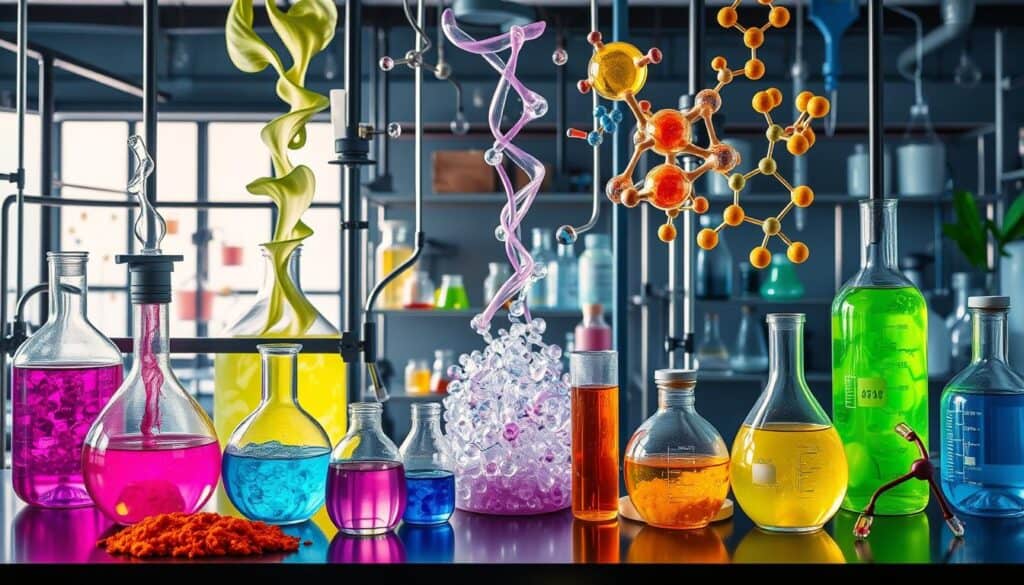
À l'heure actuelle, ces plastiques verts ne représentent que 1% de la production mondiale. Pourtant, l'intérêt pour la fabrication de plastiques de cette manière va croissant. Des recherches plus poussées pourraient permettre d'augmenter le nombre de bioplastiques et de réduire les dommages causés à la planète.
Applications des plastiques biosourcés
Les plastiques biosourcés nous conduisent vers un avenir durable. Ils sont utilisés dans de nombreuses industries et constituent une option écologique. Cette évolution vers des alternatives plastiques durables profite à la fois à l'environnement et à l'économie.
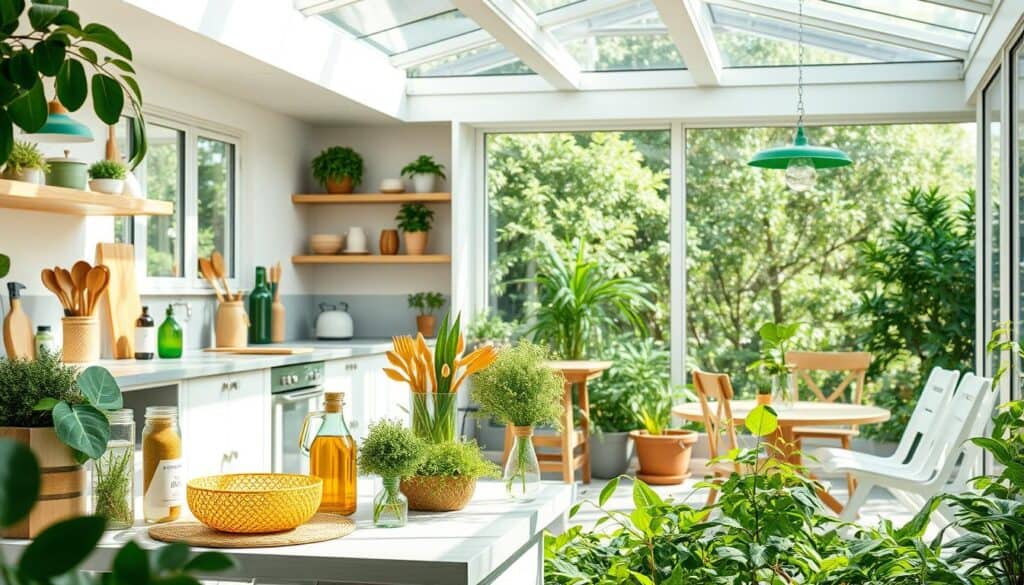
Dans les emballages, nous utilisons souvent des plastiques biosourcés comme l'acide polylactique (PLA). On les trouve dans les récipients alimentaires, les bouteilles et les couverts jetables. Comme ils se dégradent naturellement, notre impact sur l'environnement est réduit. Les épiceries et les...
Vous avez lu 36% de l'article. Le reste est destiné à notre communauté. Vous êtes déjà membre ? Se connecter
(et aussi pour protéger notre contenu original contre les robots d'indexation)
Communauté mondiale de l'innovation
Se connecter ou s'inscrire (100% gratuit)
Voir la suite de cet article et tous les contenus et outils réservés aux membres.
Uniquement de vrais ingénieurs, fabricants, concepteurs et professionnels du marketing.
Pas de bot, pas de hater, pas de spammer.
FAQ
De quoi sont faits les plastiques biosourcés ?
Les plastiques biosourcés proviennent de matériaux qui peuvent repousser, contrairement au pétrole. Ils peuvent être fabriqués à partir de plantes ou par des microbes qui mangent des plantes. Les exemples les plus courants sont le maïs, la canne à sucre, les pommes de terre et les plastiques fabriqués par des bactéries.
Comment les plastiques biosourcés contribuent-ils au développement durable ?
Ils contribuent à réduire les combustibles fossiles, à mieux gérer les déchets et à réduire les gaz à effet de serre. Les plastiques biosourcés peuvent être recyclés ou fabriqués à partir de matériaux recyclés, s'inscrivant ainsi dans un cycle d'utilisation plus écologique.
Que sont les polymères d'origine végétale ?
Polymères d'origine végétale sont un grand groupe de plastiques biosourcés. Ils proviennent de plantes comme le maïs ou la canne à sucre. Ces plantes sont transformées en matériaux qui peuvent ensuite être transformés en plastiques.
Les micro-organismes peuvent-ils produire des plastiques biosourcés ?
Oui, certains organismes minuscules peuvent créer des plastiques lorsqu'ils mangent des nutriments spécifiques. Il s'agit d'un moyen écologique d'obtenir des plastiques qui se décomposent plus facilement.
Comment les déchets sont-ils transformés en plastiques biosourcés ?
De nouvelles méthodes ont été trouvées pour transformer les déchets et les plantes non alimentaires en plastique. Cela permet non seulement de réduire les déchets, mais c'est aussi meilleur pour la planète.
Qu'est-ce que l'acide polylactique (PLA) ?
Le PLA est un plastique écologique fabriqué à partir d'amidon végétal. Il est bon pour l'environnement et est souvent utilisé pour des emballages et des ustensiles jetables.
Que sont les polyhydroxyalcanoates (PHA) ?
Les PHA sont des plastiques biodégradables fabriqués par des microbes. Ils conviennent aux utilisations médicales car ils sont sans danger pour le corps et se décomposent naturellement.
Qu'est-ce que le polyéthylène biosourcé (Bio-PE) ?
Le Bio-PE est une forme plus écologique du polyéthylène, un plastique courant. Il est fabriqué à partir d'éthanol végétal et non de pétrole, ce qui le rend plus respectueux de l'environnement.
Comment sont fabriqués les plastiques biosourcés ?
Ils peuvent être fabriqués par des procédés chimiques ou en utilisant des organismes vivants. L'objectif est de créer des plastiques à partir de sources renouvelables au lieu du pétrole.
Quelles sont les applications courantes des plastiques biosourcés ?
On les trouve dans les emballages, les produits agricoles, les vêtements, les voitures et l'électronique. Ils sont utilisés à la fois dans les articles jetables et dans les produits à longue durée de vie.
Quels sont les avantages environnementaux des plastiques biosourcés ?
Ces plastiques sont fabriqués à partir d'éléments qui poussent, et non de pétrole, et peuvent se décomposer plus naturellement. Cela permet de réduire la pollution et les gaz à effet de serre.
Quels sont les défis associés aux plastiques biosourcés ?
Ils peuvent être coûteux à fabriquer, entrer en concurrence avec les cultures vivrières et nécessiter des conditions spéciales pour se décomposer. Ces problèmes peuvent les rendre moins compétitifs et plus difficiles à gérer à la fin de leur vie.
Comment les plastiques biosourcés se comparent-ils aux plastiques traditionnels ?
Les plastiques biosourcés utilisent des ressources renouvelables et ont moins d'impact sur la planète. Les plastiques traditionnels utilisent du pétrole et peuvent nuire davantage à l'environnement.
Quel est l'avenir des plastiques biosourcés ?
L'objectif est de les rendre meilleurs, moins chers et plus fonctionnels. Les plastiques biosourcés prennent de plus en plus d'importance à mesure que les gens veulent des options plus durables.
Liens externes sur les plastiques biosourcés
Normes internationales
- ISO 16620-1:2019 Produits biosourcés -- Détermination de la teneur en carbone biosourcé -- Partie 1 : Principes généraux
- ASTM D6866-21:2021 Méthode d'essai normalisée pour la détermination du contenu biosourcé des matériaux à l'aide d'une analyse radiocarbone
- ISO 14855-1:2012 Détermination de la biodégradabilité aérobie ultime des matériaux plastiques dans des conditions de compostage contrôlées
(survolez le lien pour voir notre description du contenu)
Glossaire des termes utilisés
Installation Qualification (IQ): un processus documenté pour vérifier que l'équipement ou les systèmes sont installés conformément aux spécifications, y compris l'évaluation des services publics, des conditions environnementales et la conformité aux exigences de conception, garantissant ainsi la préparation à la qualification opérationnelle.
Life Cycle Assessment (LCA): une analyse systématique des impacts environnementaux associés à toutes les étapes de la vie d'un produit, depuis l'extraction des matières premières jusqu'à la production, l'utilisation et l'élimination, visant à identifier les opportunités d'amélioration et à éclairer la prise de décision.














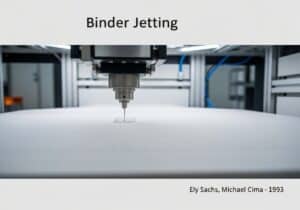
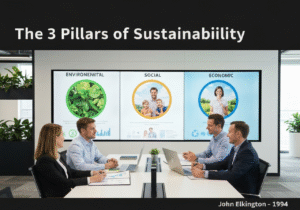


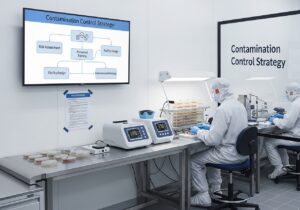







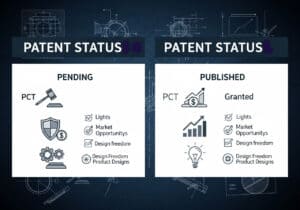
et la concurrence avec les cultures vivrières !
Il est encourageant de constater l'utilisation croissante de plastiques biosourcés dans diverses industries, mais il est important de se pencher sur leur infrastructure de traitement en fin de vie. Bien que le PLA soit compostable, il nécessite des installations de compostage industriel qui ne sont pas très répandues, ce qui peut limiter ses avantages environnementaux s'il n'est pas éliminé correctement. L'élargissement de l'accès aux systèmes de compostage et de recyclage appropriés devrait être une priorité.
Incitons les entreprises et les gouvernements à soutenir la recherche !